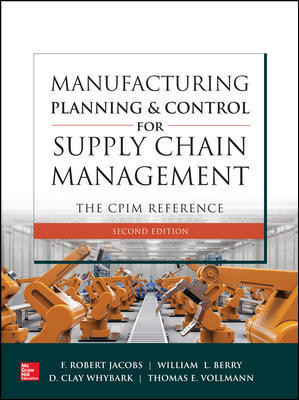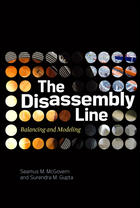Michael Molnar, NIST’s first manufacturing czar.
Michael Molnar became the first chief manufacturing officer at NIST and the director of the National Program Office for Advanced Manufacturing last August. He works with the White House, Department of Commerce, and other agencies to coordinate manufacturing research and policies. But before that, he spent almost thirty years in the industry, working on advanced manufacturing, technology development, quality and metrology. Quality caught up with him after his first year on the job to get his perspective on the challenges in the industry, the benefits of shop class, and why events like the Maker Faire may be on to something.
Q. What would you say are the challenges in manufacturing?
A. Manufacturing, you know, it’s an interesting thing. It shocks many people that the U.S. is still the world’s largest manufacturer. Nowhere else on the planet is there a misperception of what manufacturing is. We have lost a lot of manufacturing jobs in the last ten years. And part of this is not due to the economic downturn, because manufacturing today is global and globally competitive. Many other places in different areas and different countries have gotten very good at taking the results of basic R&D and doing the scale-up. Many people have termed this the missing Bell Labs.
To your question, one unique area in the U.S is we still operate from a position of strength, we have some of the world’s best companies, an innovative culture oozing with creative ideas, but so often, many of these ideas are scaled up and turned into production in other places. One big challenge is how do we work together in a partnership manner?
As our Commerce Secretary was saying, the goal here is that we want to make it in the United States and sell it everywhere. It’s not a matter of just making it for the U.S. Or it’s not a matter of a U.S. company shouldn’t have plants in other countries. Of course they should. They should be close to their customers and do what’s right for their operations. So to your question, perhaps a uniquely challenging U.S. aspect is: how do we develop this innovation ecosystem in a way that we learn to partner, without breaking any rules or without, certainly, any laws, without changing the role that everyone agrees that we should have. For many companies, they don’t know how to partner.
A small company often doesn’t know how to work with their local university. Or they might know, but they don’t have good practices or they don’t know how to work in a collaborative manner. We have companies that for fear of antitrust, for example, would never think of working on something that is precompetitive with another company that competes with them. These are important questions. You don’t want to work on the competitive side. But you don’t want to have that at the expense of, the term used is the ‘industrial commons,’ the things that benefit all of the private sector from having technology and infrastructure and standards. That’s really one of the reasons this role was created here at NIST. NIST is the National Labs if you will to support industry and industrial innovation. NIST is also the keeper of standards.
Q. It does seem like manufacturing is having a moment. It’s talked about more and in the news. What would you like to see for the future of manufacturing?
A. Manufacturing has a great misperception in the U.S., more so than other places. Part of this is because as we’ve become more productive with more automation, this is a big reason why folks in manufacturing have higher wages and higher benefits, they are very, very productive, but this has changed. Fifty years ago, your dad—not your mom back then—if your father didn’t work in manufacturing, your neighbor did. Here, many people don’t really have a basis in it.
If I could digress a little, I was just sent an article this morning about manufacturing and the new renaissance and the picture they showed was the Henry Ford assembly line again. That’s their image of manufacturing and it is SO far off. Manufacturing is high-tech. Manufacturing today is high touch. It’s ultra clean. Most manufacturing facilities—I came from 25 years at Cummins, the floor was white and you could eat off it, but you don’t dare do that because you would mess up the floor. So cleanliness, and high tech and such, this is much the norm and yet many people are kind of removed from that so they have this image that manufacturing is the four 4Ds: dirty, dark, dangerous and declining. We need a national campaign to clarify the image of what manufacturing is today. And manufacturing today is an exciting place. It’s a knowledge industry. It’s a place where a lot of technology comes together to make things.
If you go back to Henry Ford times, we were seen as a nation of tinkerers and inventors. And as things have gotten so complex, that if you need to make anything you need a five axis CNC machine tool that you don’t necessarily have access to, a lot of people don’t think about these things. Well, technologies like additive manufacturing will make it so that I have an idea for this cool product, I can design it myself. And so, long story short, things like additive manufacturing will suddenly make small lot sizes or even fairly large lot runs of a product economically feasible, and so I think this plays to the United States’ strength of opening up, sort of giving the car keys to people. Be creative. If you have an idea to make something, here’s how you can make it, and it’s a whole new way to get it done. It’s kind of an exciting time for people to think of new ways to manufacture.
Q. How did you get involved in manufacturing?
A. My dad was a manufacturing guy. After he got out of the army, he was a tool and die guy at Studebaker, the car company. And he told me, “Son, always do whatever you think is fun and important in life.” So I obeyed his only advice to me by deciding, I want to do what my dad did.
What my dad liked to do was design and make things. Later, he actually started up his own machine shop. And so I kind of grew up with an environment where if I wanted to make something, I could go out to the garage, there’s a lot of stuff out there. If I really wanted to make something, I could go down to the shop and make something out of metal or plastic on a mill or a lathe or something like that. I kind of thought everyone had those car keys.
Between what my dad had in the family machine shop and the high school shop class, if you wanted to make something, you would just design and make it. It was sort of what I’d always wanted to do. For the longest time, I’d wanted to be a mechanical engineer and design things and get them made. And so I just went on from there, picked up a few engineering degrees. I’ve always wanted to work in manufacturing because it just seemed fun to design and make things. And it felt like at the end of day you could look back and see “This is the impact that I had.” In short, it was just the attraction of making things.
Although it is disappointing to hear that many schools are getting rid of that, it seems like the pendulum is swinging back. There’s a program to put things like additive manufacturing, 3-D printers in tens of thousands of high schools. There’s these things called Maker’s Faires, where you don’t have to know or have the equipment yourself, you just have to have the idea. You asked about the future of manufacturing. It’s really an exciting time because people are rediscovering that these new technologies are allowing them to design and make things. And you go to these Maker Faires and you find out that Gee, you’re not by yourself, you’re part of a very large community of people who want to take an idea and see it in reality.
To hear more from Michael Molnar, listen to our audio interview at www.qualitymag.com/media/podcasts/2594.



